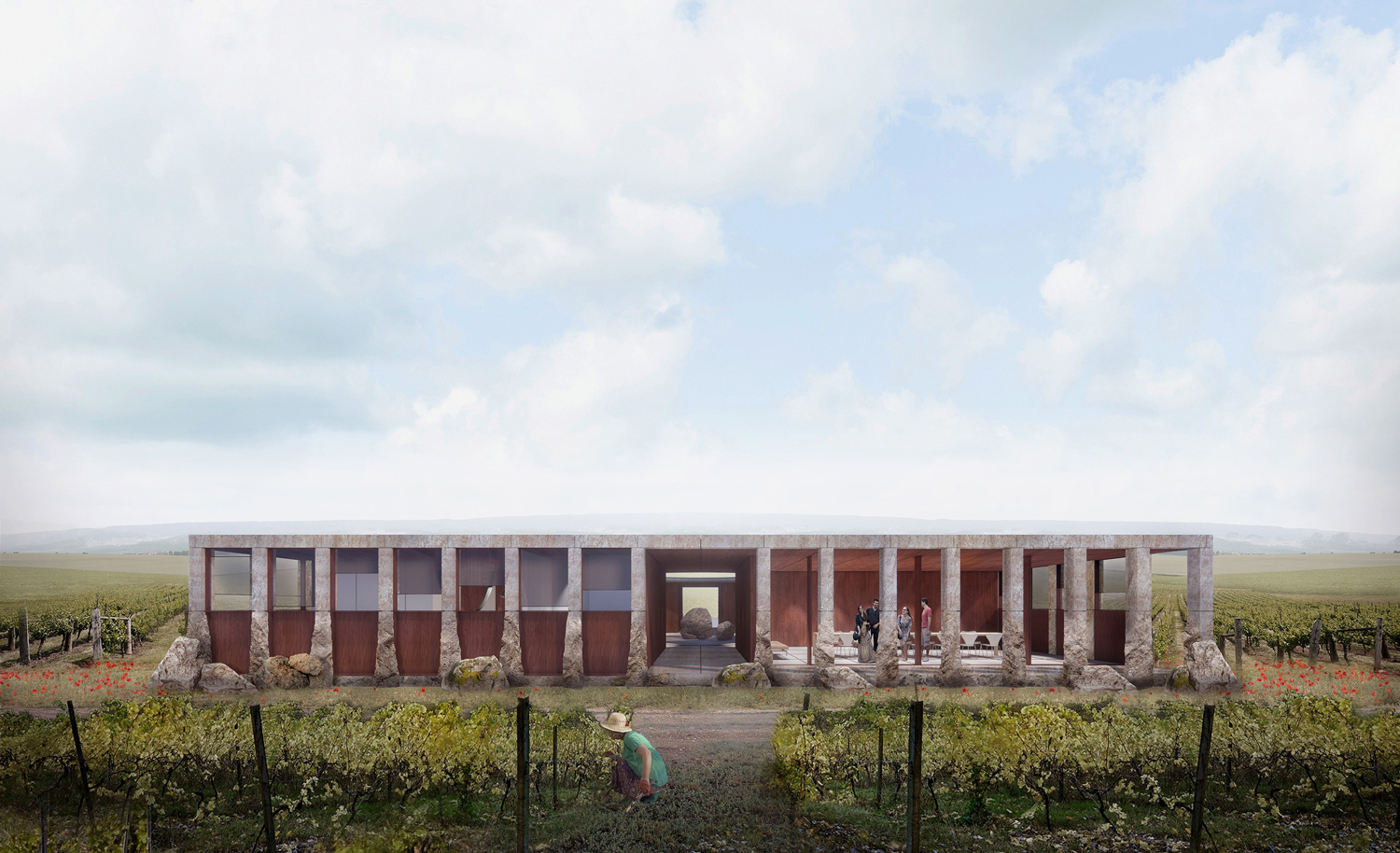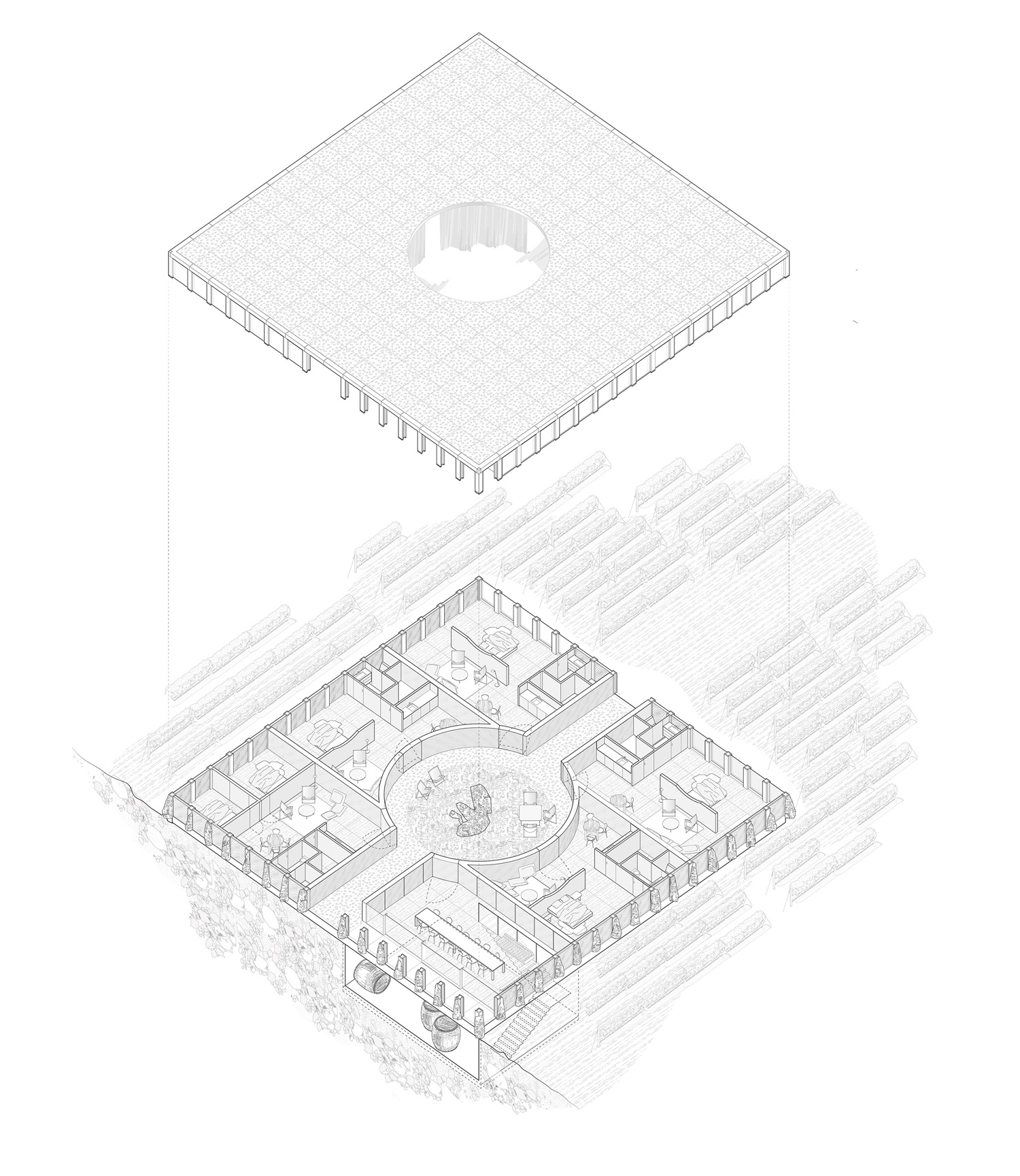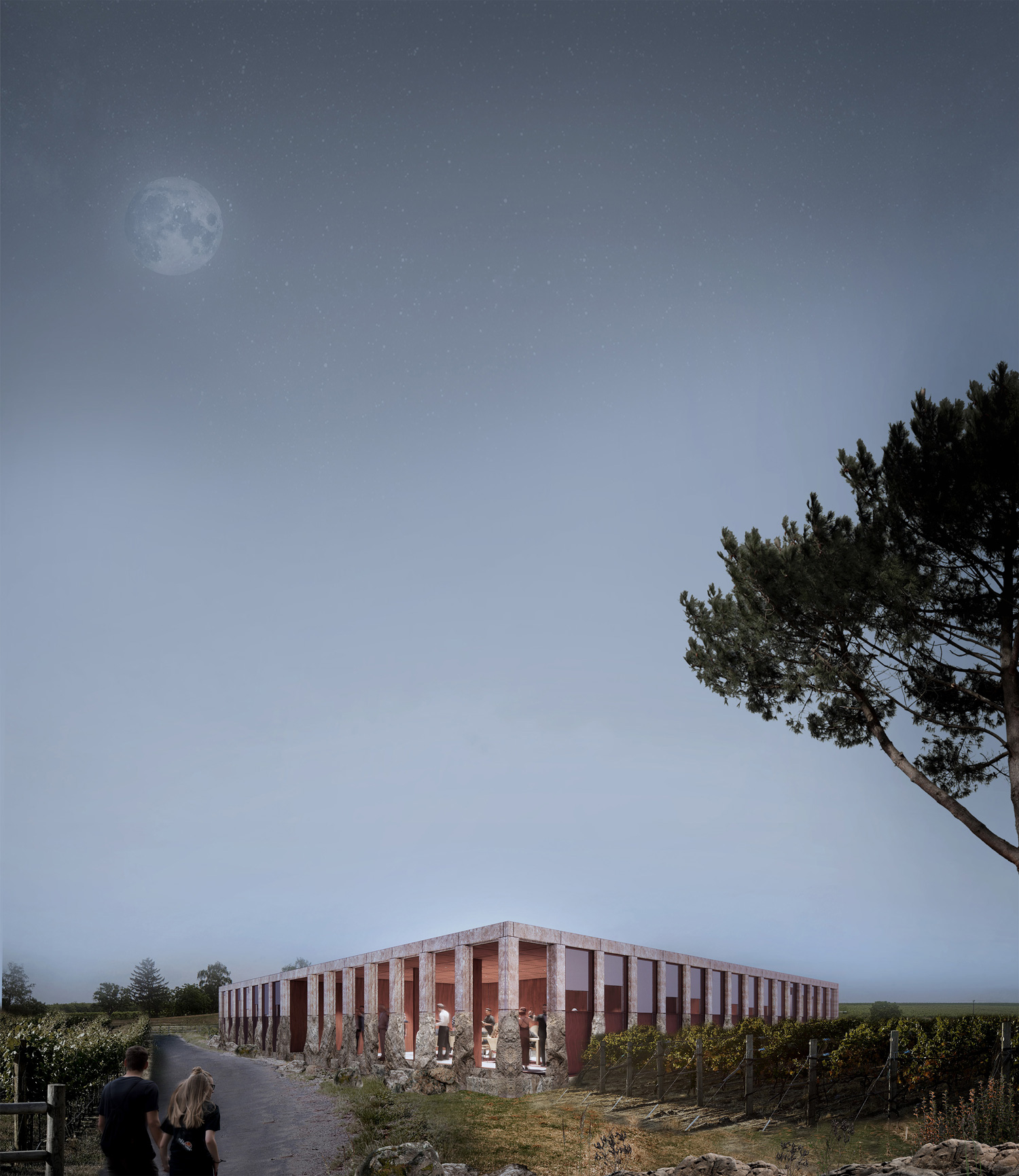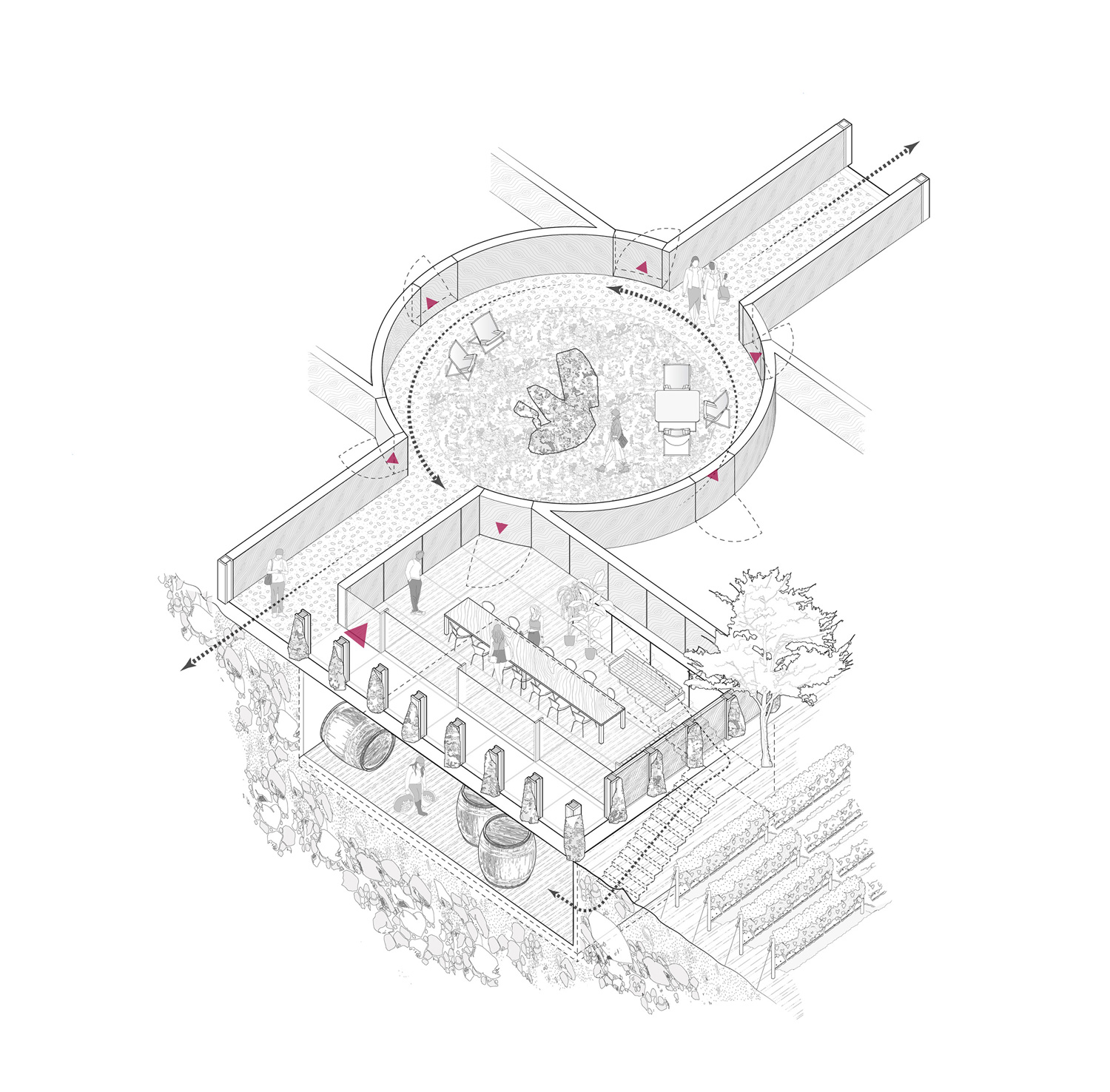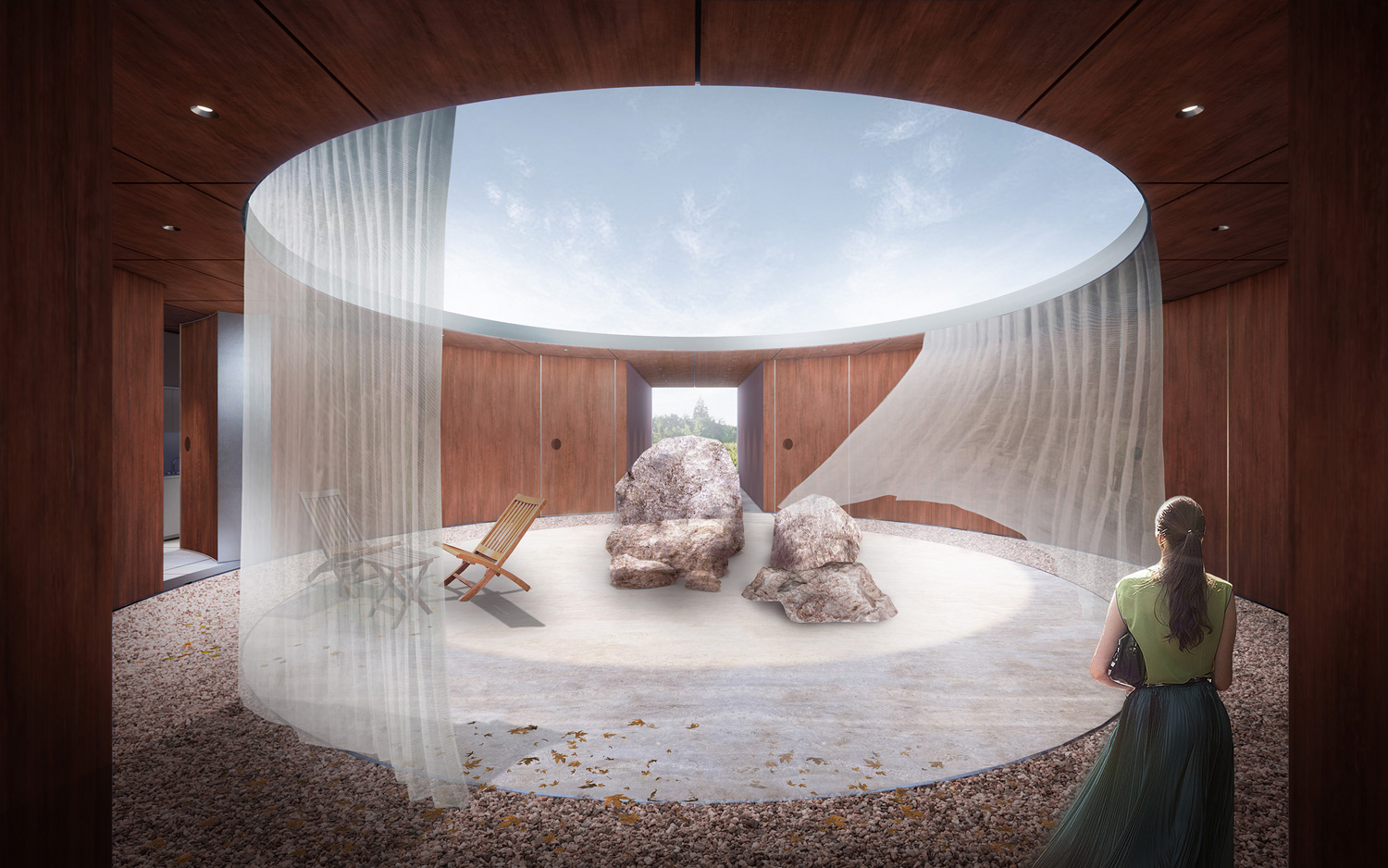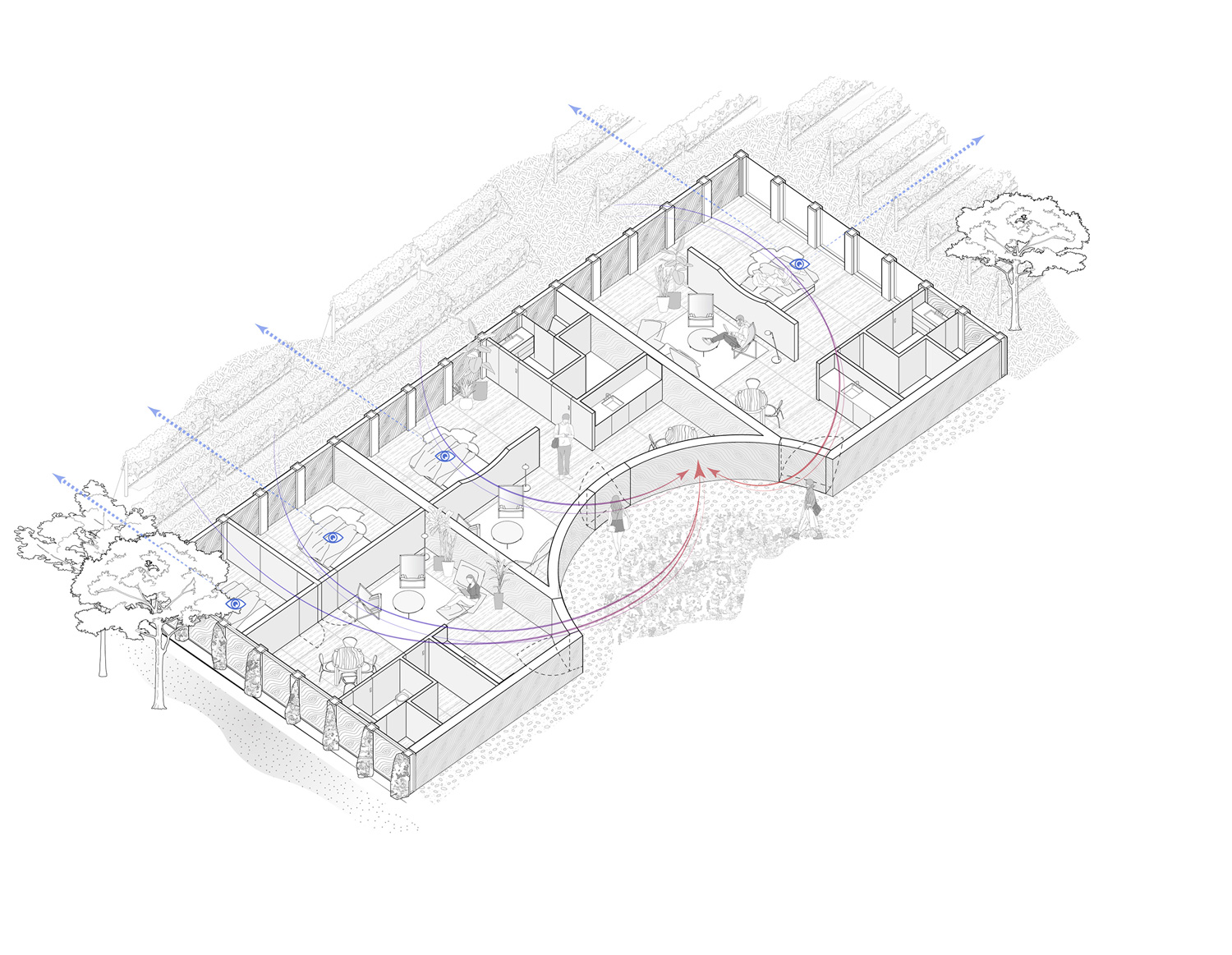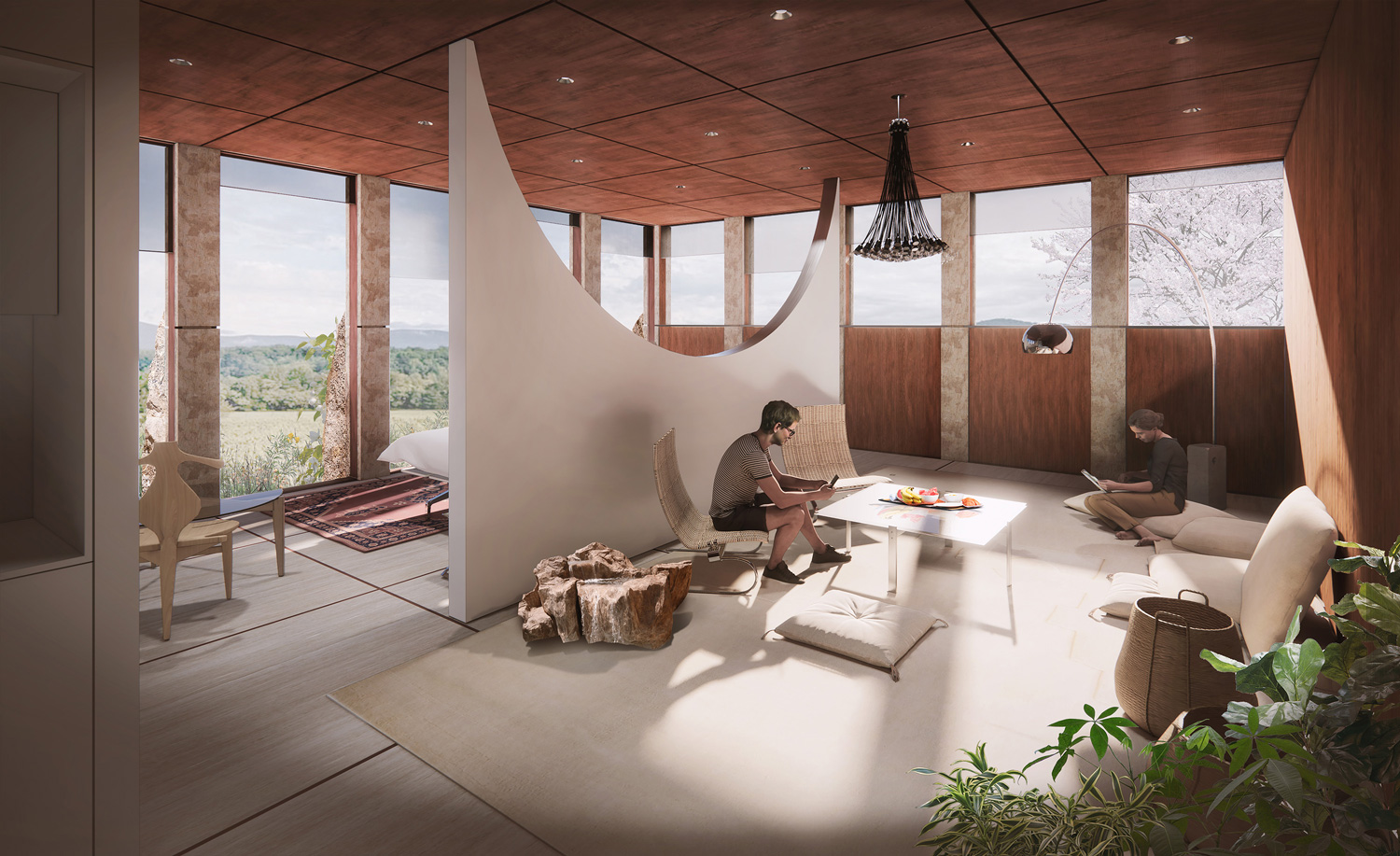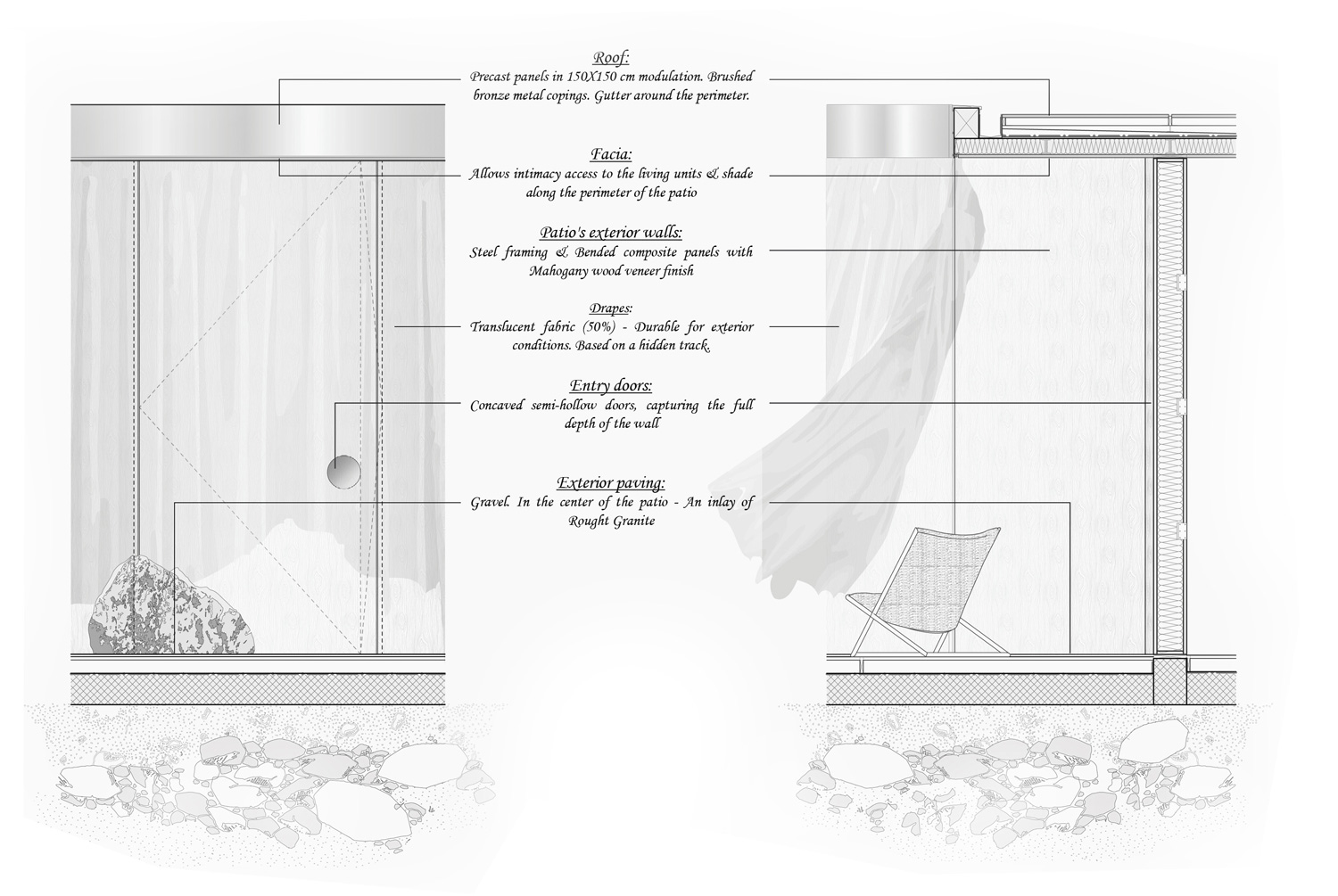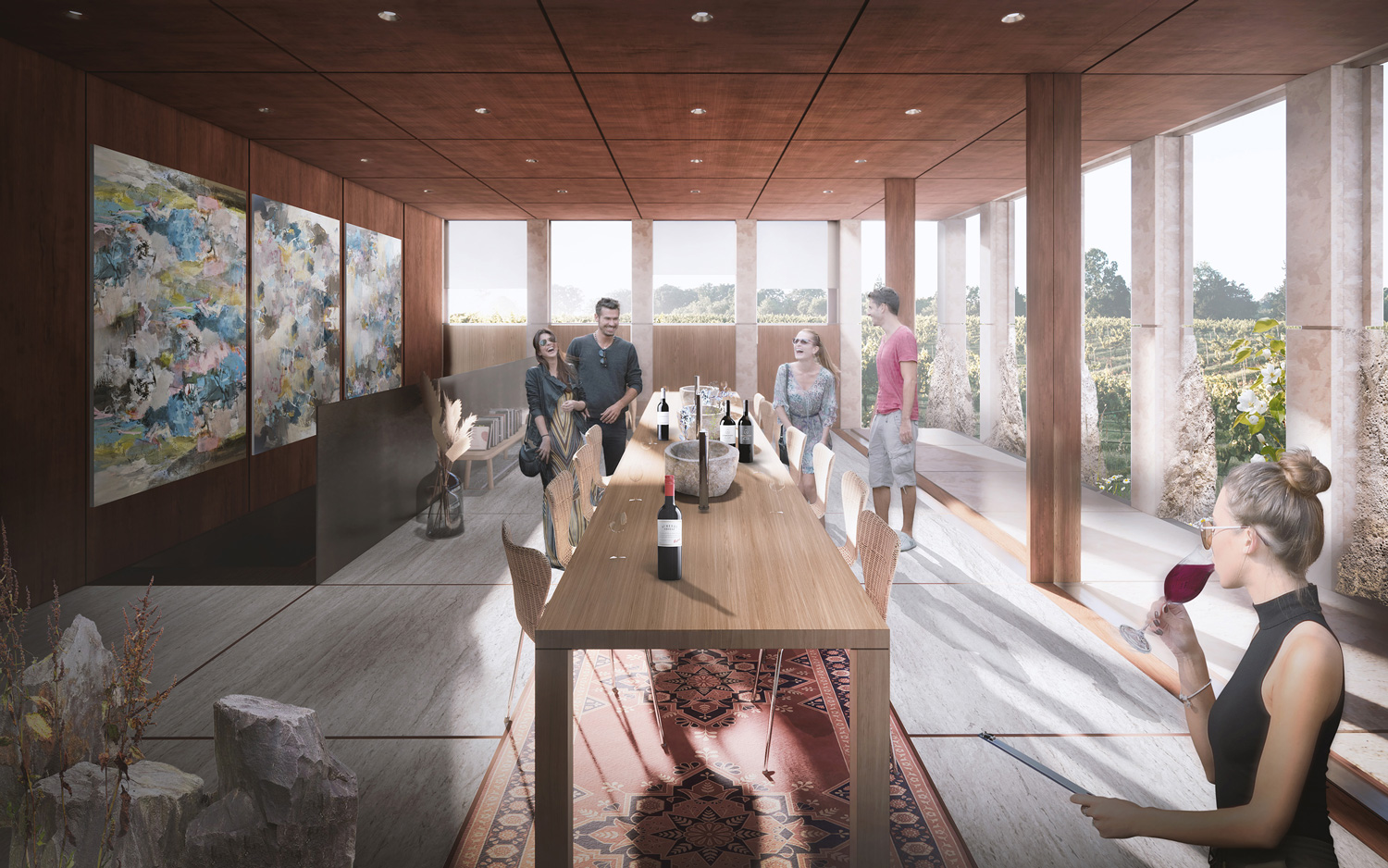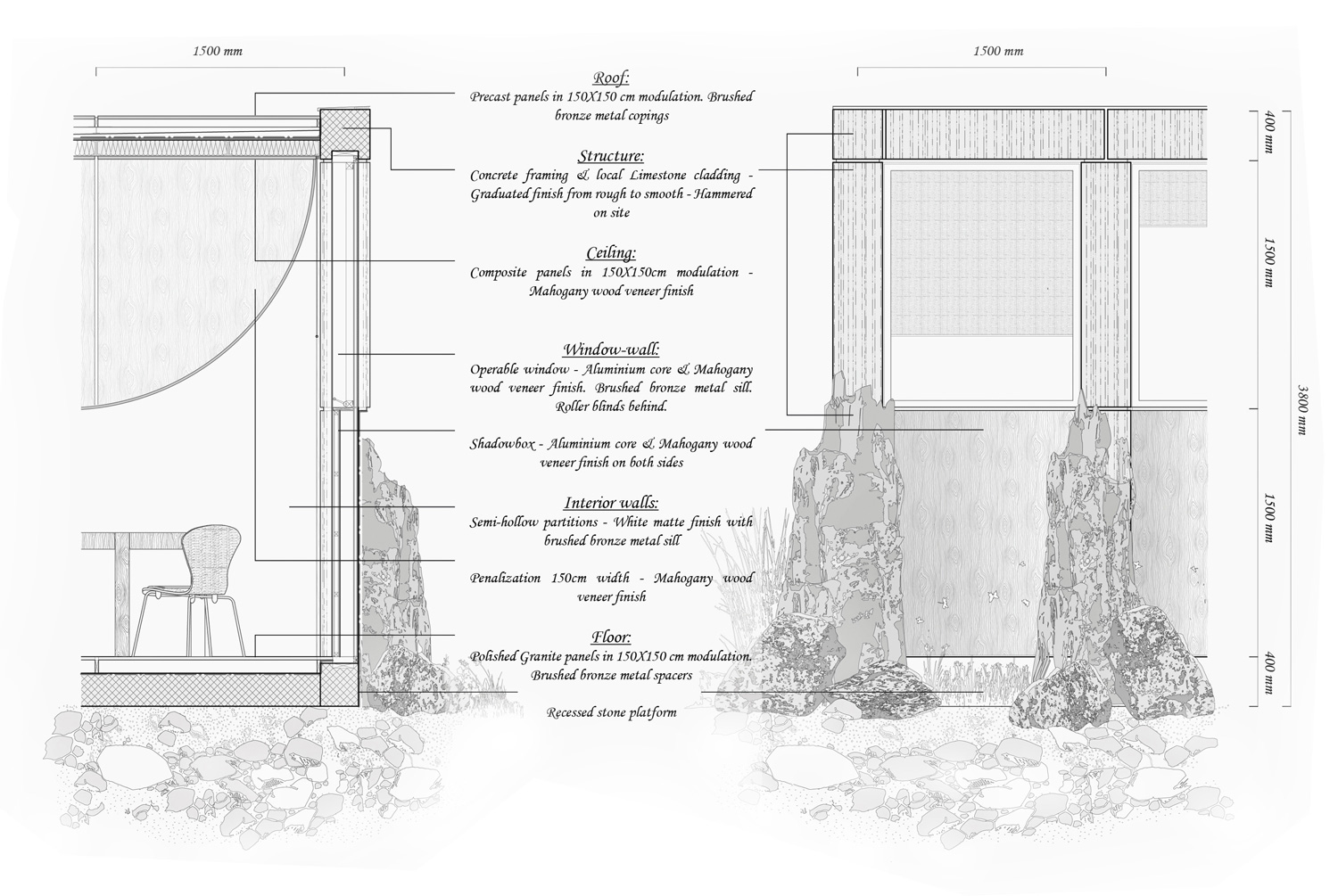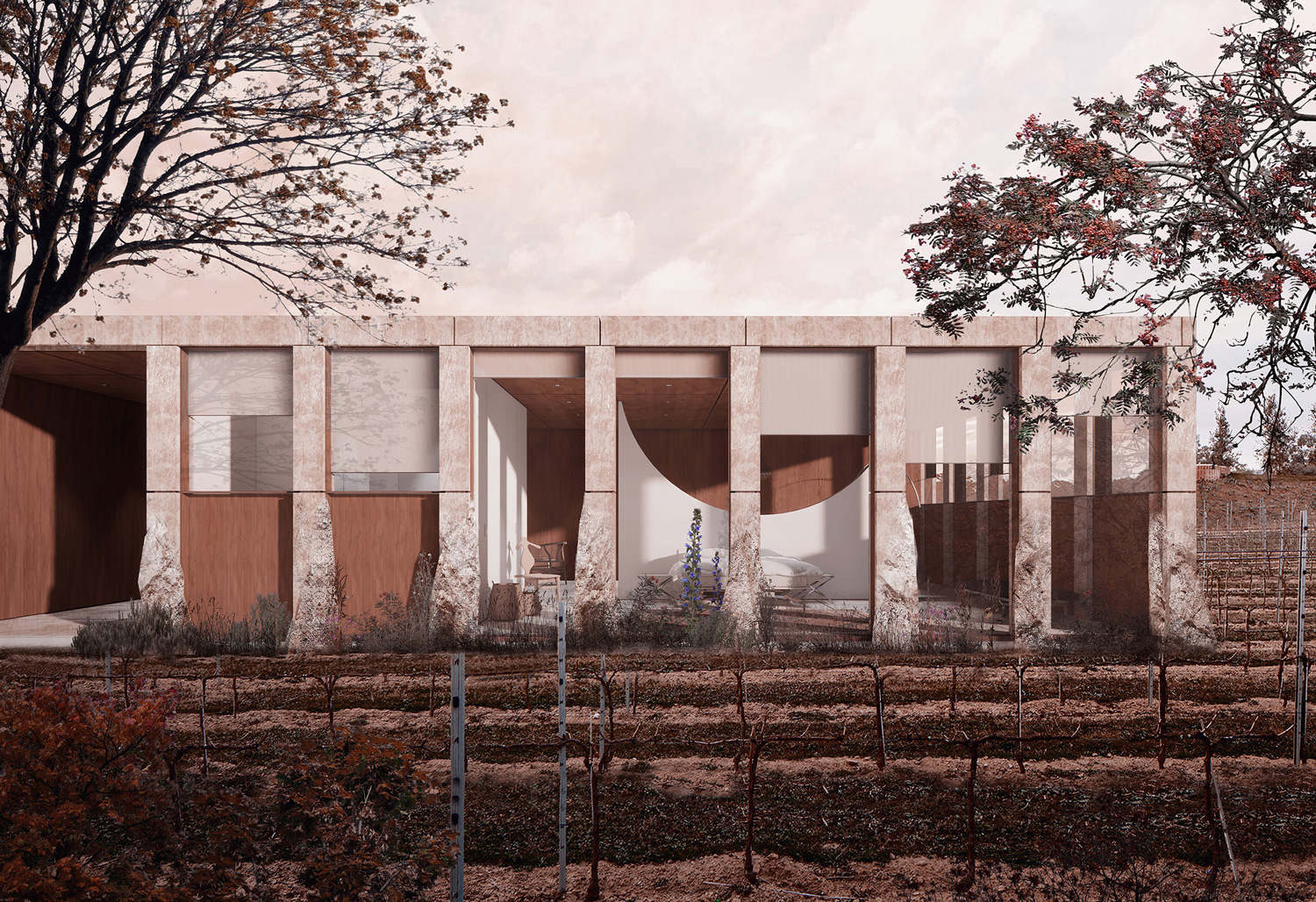☉ The Cortaile House is a finalist competition entry by Matan Gal for Tili Wine in 2023. It is located in Umbria Italy in a countryside setting. Its scale is small with a surface of 650 sqm. Key material is stone.
The typology of the Cortaile-house (the Italian version of the Spanish Patio) comes from the Roman Impluvium, Atrium, and Compluvium. Over history, it has been shaped by many cultural influences and is rooted in the Mediterranean tradition. The Patio is not only a significant element in the history of architecture but also a generator of composition.
This proposal uses a circular patio (less common than the orthogonal) to weave a collection of volumes into a unified complex. The Patio is fully exposed to the sky and amalgamated with the landscape. It helps temper the interior by evacuating heat loads through passive ventilation and providing shade along its perimeter. It also serves as an external extension of the guests’ rooms, as the canopy allows shade or protection from sediments.
Unlike projects with a hermetic-flat facade that, in a binary way, differentiates between the exterior and the interior – the Patio in the project functions as a flexible buffer, which changes its appearance over the seasons’ cycles and creates a sensitive, emotional, and delicate platform for the guests’ experience. A central corridor connects the formal entry with the vineyards in the back and functions as a porous tissue that interweaves the architectural object with its own surroundings.
The project sees the terrain and its soil as a host for both the vineyards and the architectural object. With this understanding, the structural columns are embedded in the ground, melding the complex and the landscape. The columns are composed of a concrete core and covered with local limestone with a rough to smooth finish, allowing them to absorb patina over time.
The project is characterized by simplicity, symmetrically and rigid order, affiliated with the Critical regionalism approach. While classical elements were integrated into the design, the functionalism and the economic aspects are captured by a single squared story that maximizes the site boundary and structural order based on an efficient module of 150cm, rational volumetric division per the given program, distinct circulation and flow, typical rigorous details, and optimization between opaque and transparent areas.
